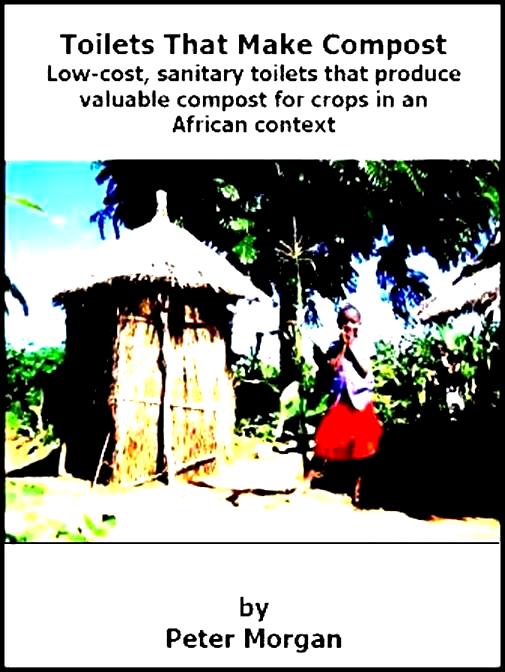Presentation
Transcript (includes slides)
Presentation download
The "Colours of Sanitation"
Yellow water = urine, brown water = faeces and flush water, beige water = anal-washing wastewater, and greywater = sullage
(wastewater from sinks, showers, etc.). The combination of
yellow and brown waters (and beige water if present) is black water, and black water +
greywater = domestic wastewater. EcoSan systems seek to avoid mixing the
various colours and this is called 'source separation'.
Supporting material
See also: Greywater Management
EcoSanRes − a very comprehensive
website on EcoSan hosted by the Stockholm Environment Institute. A very large number of high-quality publications
is available for download, including the proceeding of the International EcoSan
Conferences. Given that to many
‘EcoSanologists’ urine diversion is most important, it’s worthwhile to read the
2006 publication Urine Diversion: One Step Towards Sustainable Sanitation. See also: Technology Review − Urine
diversion components: Overview of urine diversion components such as waterless
urinals, urine diversion toilets, urine storage and reuse systems (GTZ, 2009).
Listen and watch: Ecosanres audio and video (includes an interview with Dr Arno
Rosemarin, Stockholm Environment Institute, on the need for sustainable
sanitation − well worth listening to).
GTZ EcoSan − also a very
comprehensive website on EcoSan hosted by GTZ. A good number of publications
available for download, including the 2005 ‘ecosan info package’ designed for
those new to EcoSan.
WASTE EcoSan − “especially in urban areas”
Sustainable Sanitation Alliance (‘SuSanA’)
EcoSan in urban areas?
Apparently
not! Prof-Dr Ralf Otterpohl (Technical
University of Hamburg) said at the Sanitation Challenge
conference in Wageningen, The Netherlands (19−21 May 2008) that EcoSan systems
were “not really ready for the very large scale” application at present, except
in rural areas (see here, click on ‘Otterpohl’). Now we know! So best to use EcoSan only in rural areas − see next entry:
 |
Toilets That Make Compost − low-cost sanitary toilets that
produce valuable compost for crops in an African context, by Peter Morgan (SEI,
2007).
► Anything that Peter Morgan writes is well worth reading.
See also: Arborloos − these are the simplest and 'easiest' EcoSan system.
|
Social Factors Impacting Use of Ecological
Sanitation in Rural Indonesia (WSP, 2010) – “demand for organic fertilizer exists across
regions and religions, with over 80 percent of both Muslims and Christians
responding that the EcoSan system would be beneficial, and more than 80 percent
of people are willing to consume products grown using EcoSan compost, but only 50 percent of respondents are willing to process the
urine and feces themselves to make compost.”
Women in Europe
for a Common Future − several good publications, including:
EcoSan
for ‘washers’
EcoSan systems that accommodate anal washing (Zer0-M, 2007 −
click on the download action button in the row for “Zer0-M_Journal_2007_2.pdf Journal
issue 5, August 2007”, then read pages 9−14 of pdf file).
The new colour code for anal-washing wastewater is beige!
The Value of Environmental Sanitation − Case Studies (IRC, 2006)
►Despite its title this report is almost
wholly about EcoSan.
IWA Specialist Group on Resources-oriented Sanitation [formerly the EcoSan Group]
Quote: This group shall direct its focus towards sanitation systems permitting
nutrient
reuse, mainly by source separation.
Microsoft Producer presentation by Prof. Dr. Ralf Otterpohl of TUHH (this is a 65-
minute presentation and thus a very large file!)
Detailed operational advice: Taking Care of Our EcoSan (Mvuramanzi Trust, 2005)
►Is it reasonable to expect poor people to follow all these instructions?
Use of Human Excreta
from Urine-diversion Toilets in Food Gardens: Agronomic and Health Aspects (WRC, South Africa,
2006)
Bumper harvest for composting latrines [in Mozambique]
(WaterAid, 2007)
The Social/Cultural
Acceptability of Using Human Excreta (Faeces and Urine) for Food Production in
Rural Settlements in South Africa
(WRC, South Africa,
2007)
Attitudes towards Urine Diverting Toilets and Reuse of
Nutrients in peri-urban areas of Kampala, Uganda: A case of Kamwokya II Parish
(MSc thesis, Department of Water and Environmental Studies, Linköping
University, Sweden, 2007)
A Review of EcoSan Experience in Eastern and Southern Africa (WSP, 2005)
Assessment
of Urine-diverting EcoSan Toilets in Nepal (WaterAid Nepal, 2009)
Human excreta for plant production (Bioresource
Technology, 2005; also here)
Hygiene versus fertiliser: The use of human
excreta in agriculture – A Vietnamese example (International Journal of Hygiene and Environmental Health,
2008)
Using human waste
(Waterlines, 2003)
► The sanity of ecosan (Water21, April 2005) and
Response
Phosphorus
‘EcoSanologists’ make much of the
impending phosphorus crisis (e.g. Closing the Loop on Phosphorus EcoSanRes
Fact Sheet #4, April 2005), but this has little to do with the periurban and
rural poor in developing countries and it’s not really much of a reason why
they should have EcoSan toilets − better for industrialized countries to stop
using phosphorus in detergents (see Phosphates and Alternative
Detergent Builders, European Commission, 2002).
Of course, if poor
rural farmers want to use the nutrients in their excreta to increase their
incomes, then they should be helped to do so at low cost and at minimal
risk to their health and the health of those who eat their crops (see Toilets That Make
Compost and Arborloos). If this nutrient use helps in any way at all to
postpone the P crisis, then that's all to the good. The price of DAP (diammonium phosphate) has been very high, so subsistence
farmers really should be en- couraged to use the P and other nutrients in human wastes. However, DAP prices are now falling − see here.
